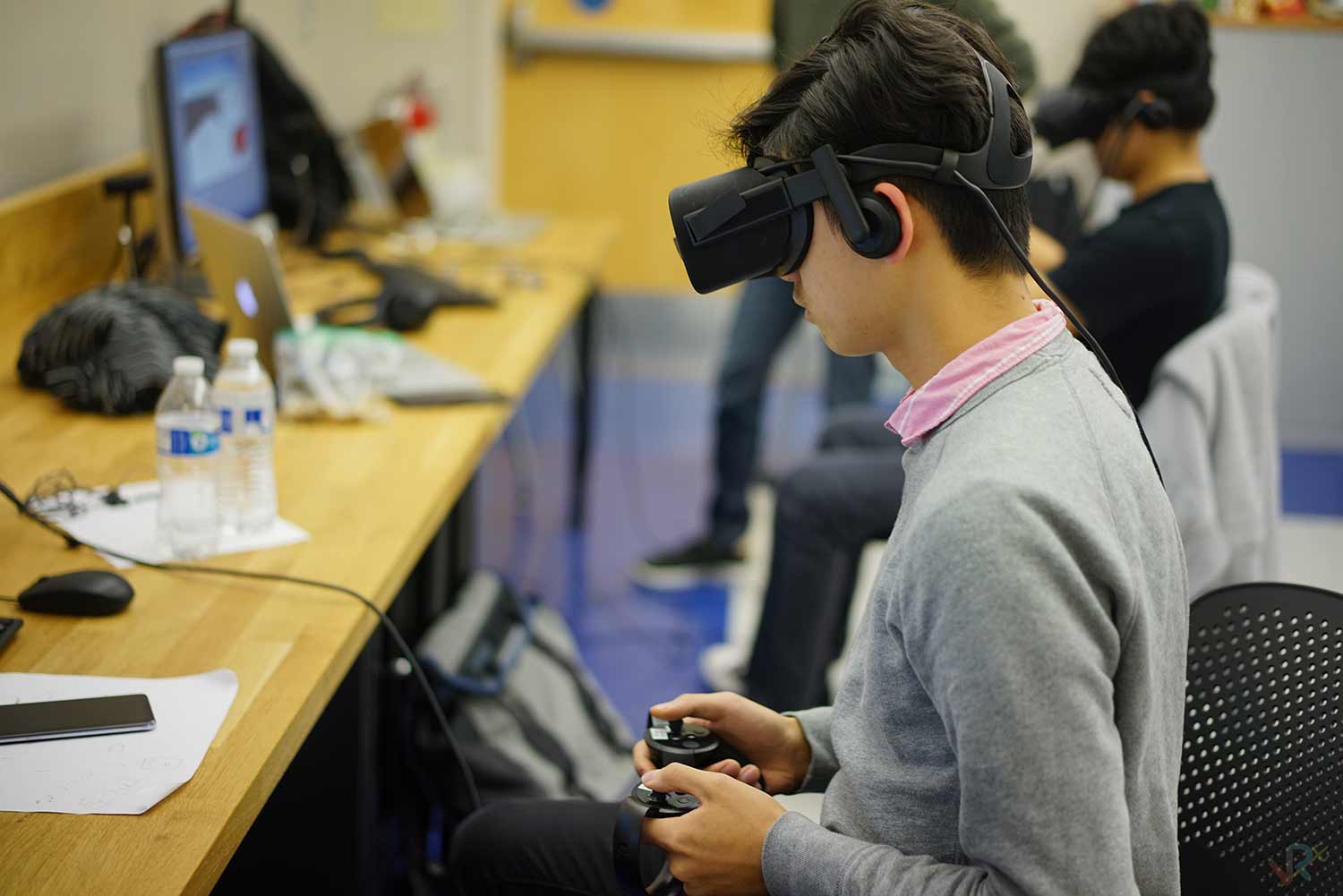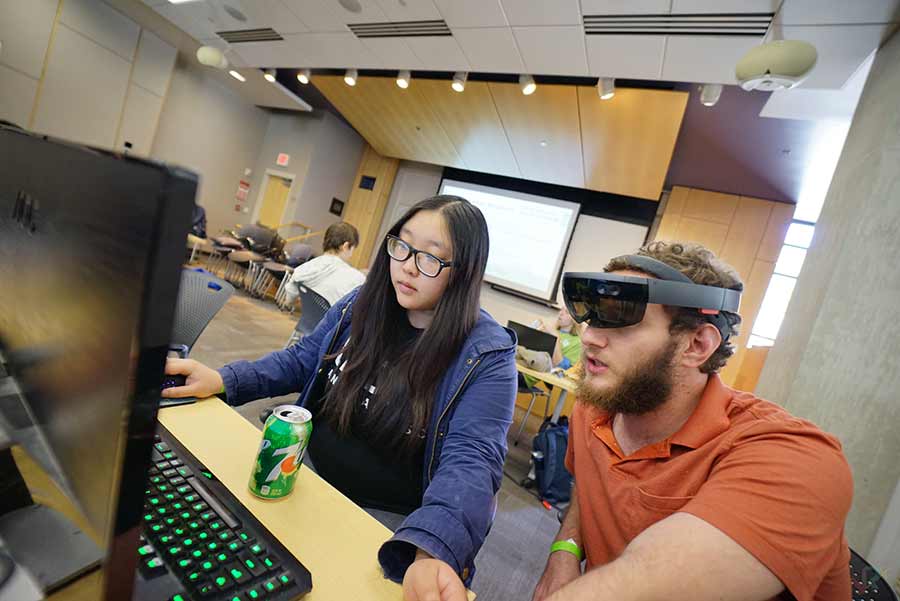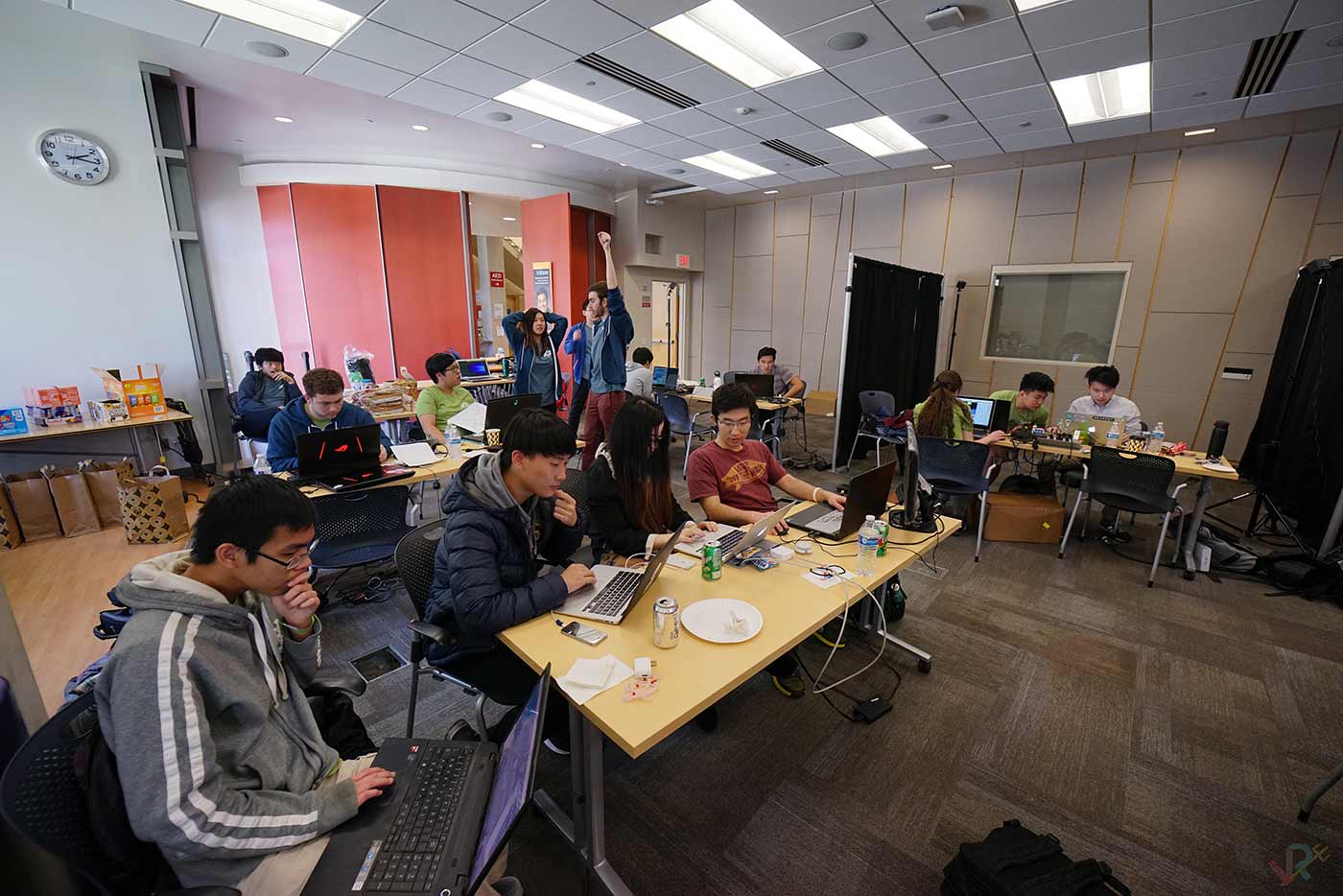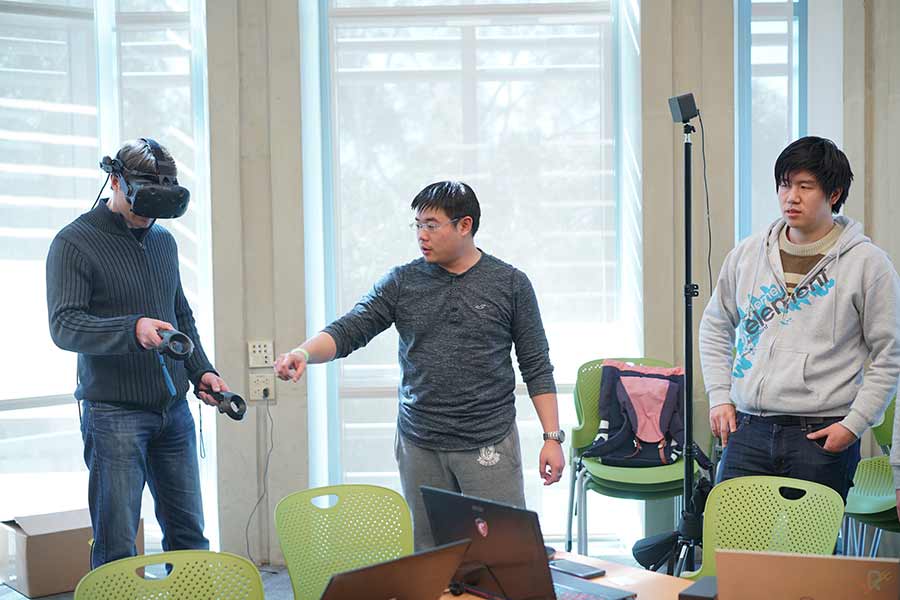Scientists Discover a New Signaling Pathway and Design a Novel Drug for Liver Fibrosis
Health & Behavior
By:
Published Date
By:
Share This:

A HackXR student participant working on his team's PlatformXR virtual reality project. PlatformXR encourages users new to the VR environment to explore what's possible in the virtual world. Photo credit Robin Xu/ UC San Diego VR Club
Anish Kannan, a fourth year computer science student at UC San Diego, had no interest in virtual reality (VR) until one fateful hackathon four years ago.
“When I was a freshman, I went to a virtual reality hackathon and it pretty much changed my college career,” Kannan said. “I was a freshman. I barely knew how to program anything, but just wanted to go learn something new. I’ve done 15 or 16 hackathons since then, and it’s my chance to give back now.”
Kannan and the VR Club at UC San Diego gave back by organizing and hosting HackXR, the university’s first virtual, augmented and mixed reality hackathon, planned and run entirely by undergraduate students. XR stands for extended reality, a catchall for virtual, augmented and mixed reality.

HackXR participants build their augmented reality project. All projects were created, designed and built in just 36 hours.
UC San Diego hosted 100 students for a weekend-long hackathon full of tutorials, workshops, and time for teams to develop their own virtual, augmented or mixed reality project. The club received 200 applications for these 100 spots, including from students as far away as the University of Illinois and Georgia Tech.
Thanks to sponsors including Google, Oculus, Sony and HTC, the students were able to offer enticing prizes to teams in a variety of categories including best medical project, best multiplayer XR project and best beginner project.
The grand prize-winning team of three UC San Diego students—Christian Lay-Geng, Dana Kimball, and Patrick Traynor—plus Carter Andrews from San Diego State University, walked away with an HTC Vive, a Google Daydream, an Oculus Rift, a Samsung Gear VR, a Samsung Gear 360 Camera and four Google Cardboards. The team created a fast-paced VR game called Starshot Express, where players accelerate a train through a variety of tasks with a goal of launching the train into space.
Other teams created a VR application called Bird that allowed the user to feel as if they were flying; a fighter jet simulator that could be used for training pilots; and an escape room with one person in virtual reality and teammates guiding them through with a non-VR manual, to name just a few projects.
It wasn’t all fun and virtual games at the 36-hour hackathon, though. Many participants didn’t have experience developing for VR, or with the type of equipment they were working with. The student mentors from the VR Club helped fill the gap, providing technical guidance.
“The hard part for us was both VR and AR weren’t really meant to go together—one is meant for your phone and one is meant for this really powerful computer,” said Justin Park, a second year cognitive science major and member of the winning team in the multiplayer category. “Building a multiplayer game was a really big challenge because if the [VR and AR] were out of sync in any way it wouldn’t work. It was a really good learning experience for us.”

Some of the 100 hackathon participants hard at work on their extended reality projects.
Jurgen Schulze, a computer scientist at the Qualcomm Institute at UC San Diego and co-leader of the campus’ VR Lab, served as a judge at the hackathon and said he was impressed with what the students were able to create in just 36 hours.
“A lot of them haven’t taken formal graphics courses or even done virtual reality programming before,” Schulze said. “They taught themselves how to use the tools. It’s really impressive because this is essentially less than one work week that they spent, and seeing someone after one work week doing this much is rare.”
Schulze, who teaches several virtual reality courses in the Department of Computer Science and Engineering, said VR and AR-specific classes and resources like this give UC San Diego students a competitive advantage in the job market when they graduate.
“We have a strong program at UC San Diego on the software side, teaching students how VR applications are made and what’s at the foundation of VR—how it works under the hood,” Schulze said. “We also have the biggest VR teaching lab for undergraduates with 25 Oculus Rift workstations—no one else in the country has that. This gives us the opportunity to not only teach students how VR works in the classroom, but they can actually write their own software and get familiar with high-end VR systems.”
Schulze also commented on the level of creativity at HackXR.
“A lot of projects have picked up topics that I hadn’t thought of before, and I think this is the right environment for that—to have a crazy idea, build a demo for it, and see where it can take you.”

Professor Jurgen Schulze tries the Amaze4 project, a first-person escape maze in virtual reality.
Kannan agrees. He said he sees collaboration between engineers and artists as a major area of growth for the extended reality community.
“We want more artistic people to get involved,” Kannan said. “Now, everyone wants to code, not many people want to write a story or music or art, but we need that too.”
The skills that artists or computer scientists learn for virtual reality purposes extend far beyond that singular use.
“The thing about this stuff is it’s not purely VR and AR—the skills you gain from VR and AR are transferred to other games and computer graphics, so it’s not restrictive,” Kannan said. “The languages you need, like C#, and C++, all transfer.”
Kannan also was heartened by the commitment that the students showed to creating a finished product.
“All the teams stayed, which is great. Normally other hackathons have maybe a 70 or 80 percent retention rate. After the first night, a lot of teams don’t come back. But every team that was assigned a space came back and finished their project which is great to see,” said Kannan.
The final project submissions from HackXR can be found here.
Share This:
Keep up with all the latest from UC San Diego. Subscribe to the newsletter today.